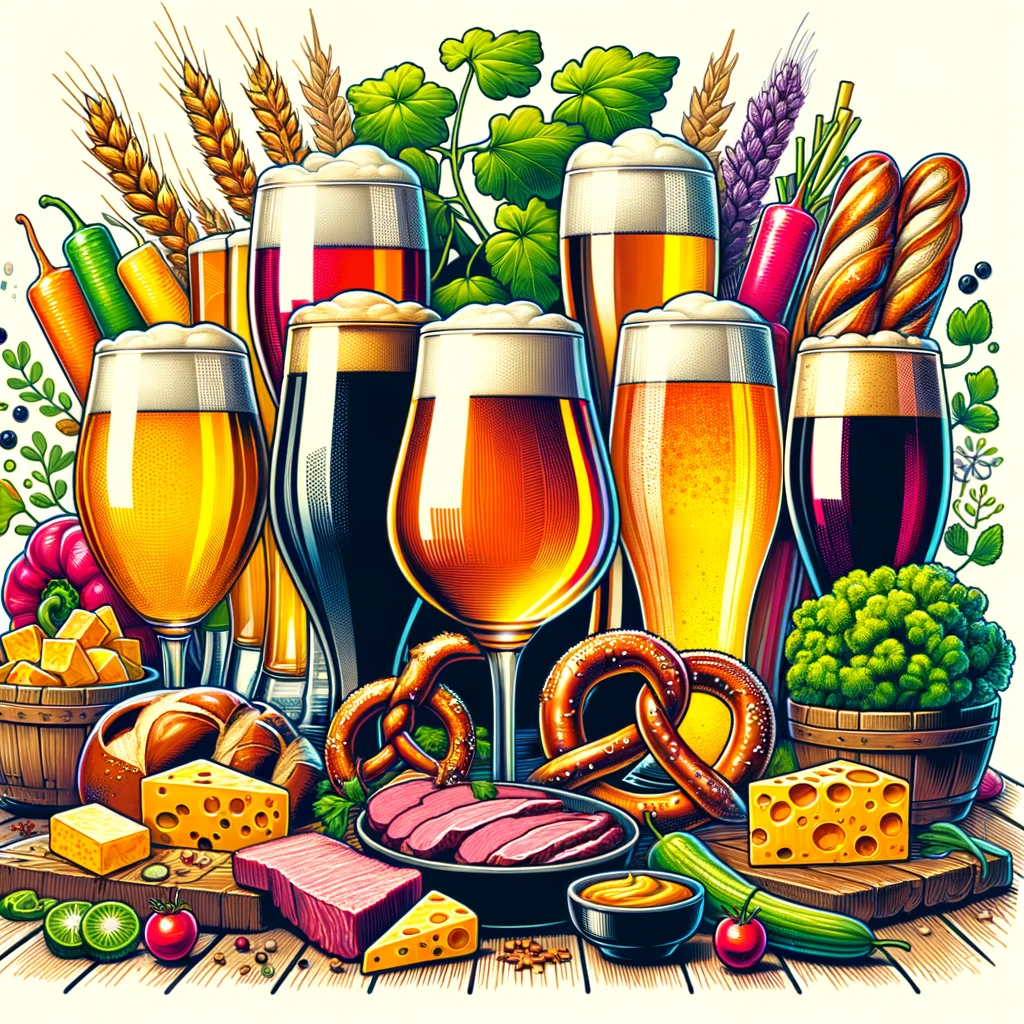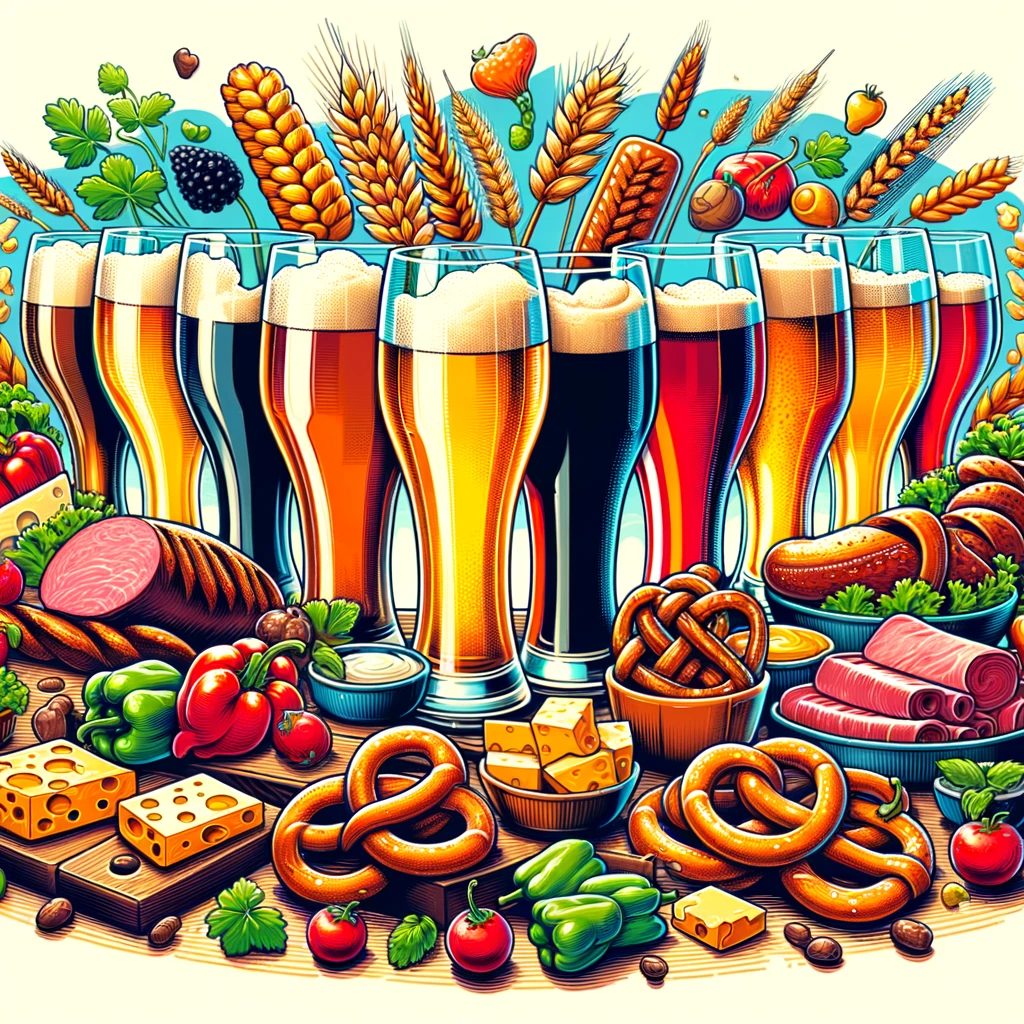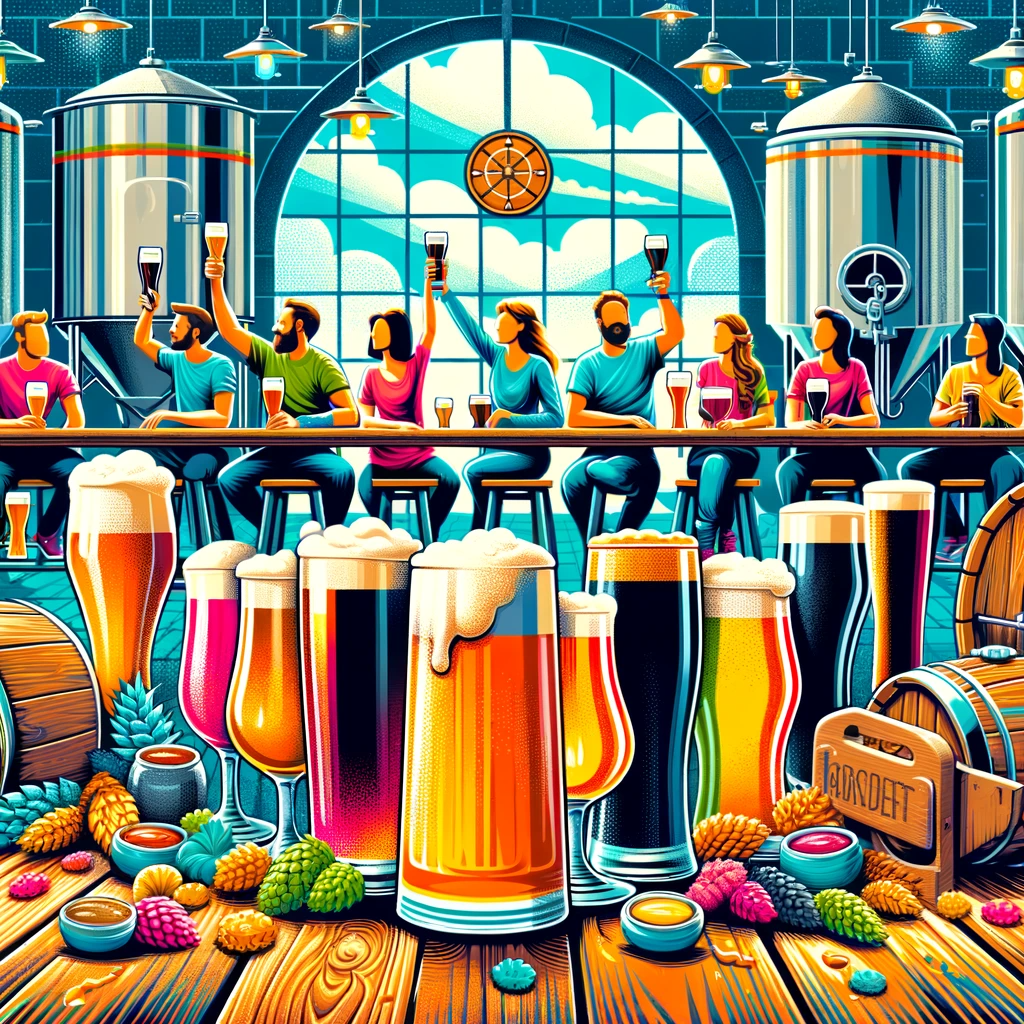Stephen Wagner | Writer, Editor, Marketer
About This Article
I wrote this piece of content for the Hillgate Brewery website as a companion to the business plan I created. The credited author, Andrew Caldwell, is one of the brewery’s fictitious owners. His perspective would lend expert credibility to the article.
Beer and Food Pairing: 3 Steps to Master the Art and Impress Your Friends
Expert brewer Andrew Caldwell reveals his strategy for choosing the perfect beer for your meal. It’s simpler than you think.
For the Love of Beer
If you’re reading this article, there’s a strong chance you enjoy beer — and you’re not alone. The United States is home to around 73 million people who choose beer as their favorite alcoholic beverage. It’s a safe bet that most of them enjoy a brew with their meal from time to time. With so many flavor combinations to choose from, it’s unsurprising that beer and food pairing is a popular topic of debate.
So, how does an expert decide what to drink? Does a steak complement an IPA or a stout? Is there a correct answer?
Don’t panic. Keep reading for a primer on the art and science of beer and food pairing. All it takes is three simple steps. You’ll learn the basics, discover specific suggestions, and walk away with a new skill that’s sure to impress your friends. At the very least, you’ll be extra confident next time you dine out.

1. The Basics of Beer and Food Pairing
Here’s where the science starts. Beer and food pairing revolves around three principles: complementing, contrasting, and cutting. Think of these as building blocks; once you understand them, you’re free to mix and match to create endless iterations.
- Complementing is about matching the flavor profile of the beer with the flavor profile of the food. Look for similar spices, key ingredients, or even broad tastes like sweet or salty. For instance, pairing a chocolate stout with a chocolate cake enhances the shared flavors of both. Drinking malty Oktoberfest Märzen with pretzels evokes a bouquet of fresh grains.
- Contrasting is about pairing opposites to create balance. Sweet and sour are classic opposite tastes, as are acidic and creamy. A hoppy IPA contrasts the richness of Alfredo sauce, adding balance to an otherwise heavy pasta dish. Contrasting works well with strong flavors.
- Cutting is about using beer to cleanse the palate. Think bold foods and refreshing beers. For example, a crisp, effervescent pilsner cuts through the spicy greasiness of buffalo wings. Likewise, a bright and malty Helles lager pairs well with hearty curry.
The next time you eat, consider the variety and intensity of flavors in your food. Examine its profile through savory, sweet, acidic, and other notes. You might be surprised by the things you notice. Practicing this skill will turn simple meals into taste explorations and give you an advantage in pairing beers.

2. Important Beer Terms
Before we continue, let’s get something out of the way: beer flavors are subjective, and everyone describes tastes a little differently. It’s okay to stretch your vocabulary to explain the pint in your hand. That said, brewers and enthusiasts have some key terms that are helpful to understand.
- Malt is the flavor of the grains that are steeped or boiled to create beer. Barley, wheat, oats, and rye are the most common grains used. These add unique characteristics depending on the specific variety and how they are heated or roasted. These flavors can be described as roasty, toasty, or nutty, or tasting like biscuits, chocolate, coffee, and caramel.
- Hops are dried flowers added to beer for flavor and aroma. Depending on variety, they taste flowery, fruity, juicy, herbal, or pine-like. Brewers steep or boil hops during the brewing process; when added early they impart bitter flavor, and when added late they contribute floral aroma.
- Bitterness is a specific characteristic measured on a scale with a value called IBU (International Bitterness Units). Each beer style has a standard range within which its bitterness should fall. In a practical sense, this means that lagers and English milds taste less bitter than IPAs and imperial stouts.
As you sample various beers, describe how they taste in these terms. Is your hazy pale ale bursting with juicy hops flavor over soft bitterness? Does your ESB taste like sweet grains and toasted biscuits? If so, you’re ready to begin beer and food pairing like a true Epicurean.

3. Common Beer and Food Pairings by Style
We’ve covered the principles of pairing and important beer terms. Now it’s time to practice. The popular styles listed here are available at Hillgate Brewery in regular rotation.
- Light Lager goes down smoothly with mild malt flavor and bitterness. Relatively high carbonation makes it an excellent companion for spicy foods, burgers, salads, grilled chicken, and fish.
- Dark Lager is similar to its light cousin, except with a heavier feel on the palate. It pairs well with pizza, burgers, grilled meats, stews, and roasted vegetables.
- Amber Ale boasts medium-to-high malt and bitterness. Consider drinking it alongside pizza, barbecue, fried food, beef, and cheeses like Gruyère, Emmental, and Swiss.
- English Mild Ale offers subtle bitterness, satisfying malt flavor, and a deceivingly dark appearance. It’s well suited for wild game meats, cheddar, mushrooms, salads, and fruit tarts.
- British-Style Bitter is a remarkably drinkable style known for its mild maltiness and low alcohol content. Try it with fish and chips, roasted meats, savory pies, cheese, and nuts.
- Wheat Beer has a satisfying malt profile and a distinct wheat flavor. Pair it with spicy foods, salads, sushi, light seafood, and fruity desserts.
- Brown Ale is usually malty with a hint of bitterness. It’s great with sausage, roasted pork, fish, sushi, and nutty cheeses like gouda or cheddar.
- Porter and Stout are two related styles characterized by dark appearance, heavy malts, and bitterness to match. They’re a perfect match for robust foods like grilled and smoked meats, stews, seafood, and chocolate or coffee desserts.
- IPA (India Pale Ale) is famous for being extremely hoppy with a variety of complex flavors and aromas. Pair them with spicy foods, steak, barbecue, fried fish, and pasta.
The pairings listed above are merely starting points in your journey. It’s important to consider the flavors you enjoy and continue to search for new ones as your tastes evolve. Experiment boldly with different combinations, as you never know what you’ll find. With any luck, your new favorite beer and food pairing is just around the corner.

Beer and Food Pairings at Hillgate Brewery
With twelve of our beers on tap, Hillgate Brewery is the perfect place to practice your pairing skills. Our taproom pub in Reading, PA offers beer flights and a curated menu of delicious dishes to complement any style.
If you prefer guided study, we also host periodic beer and food pairing events that feature special limited brews and collaborations with local eateries. These sessions invite you to explore the local food scene in new, exciting ways.
We do hope you’ll join us.